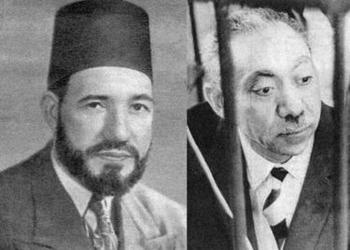A Closer Look at the Muslim Brotherhood

"However," notes Steven Simpson in the Canada Free Press, "if one looks for reality and clarity (unlike the current American administration which foolishly engages the Brotherhood and views it as 'moderate'), it will be seen that the Brotherhood is a violent fascist movement that seeks global Islamic domination. Indeed, it is the phalanx and aegis for all Islamist groups that have emerged throughout the Muslim world. Bluntly put, it is nothing short of an Islamic hydra, and an implacable enemy of the West, Israel, and all non-Muslims" ("Why the Arab Spring Will Descend Into an Islamic Ice Age," April 16, 2012).
The Muslim Brotherhood was founded in Egypt in 1928 by a schoolteacher and imam named Hassan al-Banna, who desired the revival of the Islamic caliphate. The caliphate—the international community of Muslim believers led by a caliph, a successor to Muhammad—had fallen with the end of the Ottoman Empire at the conclusion of World War I and the modernizing influence of Kemal Ataturk, who with great difficulty transformed Turkey into a secular state.
Al-Banna was killed in 1949, and the Brotherhood was banned in Egypt just before, but it would continue to operate—soon guided by al-Banna's principal disciple Sayyid Qutb, who had been a bureaucrat in Egypt's education department.
In the words of former U.S. Attorney General Michael Mukasey: "Qutb caused enough trouble in Egypt to get himself awarded a traveling fellowship in 1948 . . . Regrettably for us, Qutb chose to travel to Greeley, Colorado. And although it would be hard to imagine a more inoffensive place than post–World War II Greeley, Colorado, for a man like Qutb it was Sodom and Gomorrah. He hated everything he saw: American haircuts, enthusiasm for sports, jazz, and what he called the 'animal-like mixing of the sexes,' even in church.
"His conclusion was that Americans were 'numb to faith in art, faith in religion, and faith in spiritual values altogether,' and that Muslims must regard 'the white man, whether European or American . . . [as] our first enemy' . . . [He later] continued to write and agitate for Islam and against Western civilization, particularly against Jews, whom he blamed for atheistic materialism and considered the worst enemies of Muslims" ("Executive Power in Wartime," Imprimis, October 2011).
Qutb later became the leading member of the Muslim Brotherhood and was eventually hanged in Egypt in 1966. But his brother Muhammad Qutb fled with other Brotherhood members to Saudi Arabia and eventually taught Sayyid's ideology to then-obscure figures Osama bin Laden and his eventual right-hand man Ayman al-Zawahiri, the leader of al-Qaeda since Bin Laden's death. These al-Qaeda figures and their followers are sometimes referred to as Qutbists.
Another follower of Sayyid Qutb's writings was Omar Abdel-Rahman, often called "the Blind Sheik," spiritual advisor to the 1993 World Trade Center bombers who is currently serving a U.S. sentence of life imprisonment. Bin Laden and al-Zawahiri called for his release before the al-Qaeda attack on the U.S.S. Cole in Yemen in 2000. And they relied on Abdel-Rahman's fatwa calling for the mass-murder of Americans in perpetrating the horror of 9/11 the next year.
The Blind Sheikh remains a hero among Islamists, so it should perhaps come as no surprise that the major calls for his release of late have come not from al-Qaeda but from the current Muslim Brotherhood leadership of Egypt—the so-called moderates.
